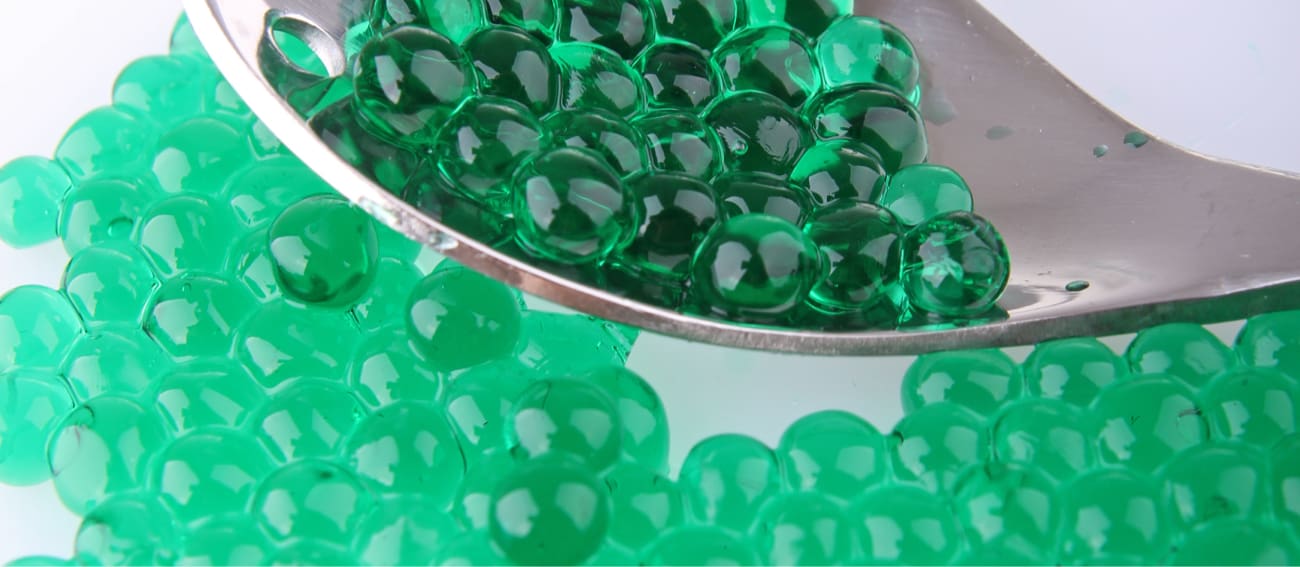Esferificaciones
Objetivo: El objetivo de esta práctica es crear una columna con líquidos de distintos colores.

-
Material de laboratorio
3 recipientes de plástico
Cilindro graduado
Saldo
Jeringa de 20 ml
Batidora de mano
Cuchara-colador
-
Reactivos
Zumo comercial de naranja y limón sin gas
Alginato de sodio, grado comestible
Cloruro cálcico, grado comestible (CaCl2)
Agua del grifo
Colorante alimentario
-
Seguridad
Utiliza material que no esté contaminado con otros productos químicos.
-
Preguntas
¿Qué reacción química se está produciendo?
Procedimiento
- Disuelve 1,5 g de alginato sódico en 40 mL de agua templada con una batidora de mano. Cuando esté parcialmente disuelto, añade los 150 mL de zumo, mezcla bien y ponlo en un recipiente con unas gotas de colorante alimentario.
- En otro recipiente, disuelve 2 g de cloruro cálcico en 500 mL de agua.
- Deja reposar ambas soluciones en el frigorífico durante al menos 30 minutos.
- Llena la jeringa con la solución de alginato y limonada y gotea esta solución sobre la solución de cloruro cálcico.
- Deja que las esferas se endurezcan durante un minuto, retíralas, enjuágalas con agua en otro recipiente, ¡y ya están listas para ser degustadas!

Creemos un futuro más brillante
Únete a nuestro equipo para trabajar con investigadores de renombre, emprender proyectos innovadores y contribuir a avances científicos significativos.
Únete a nosotros!













